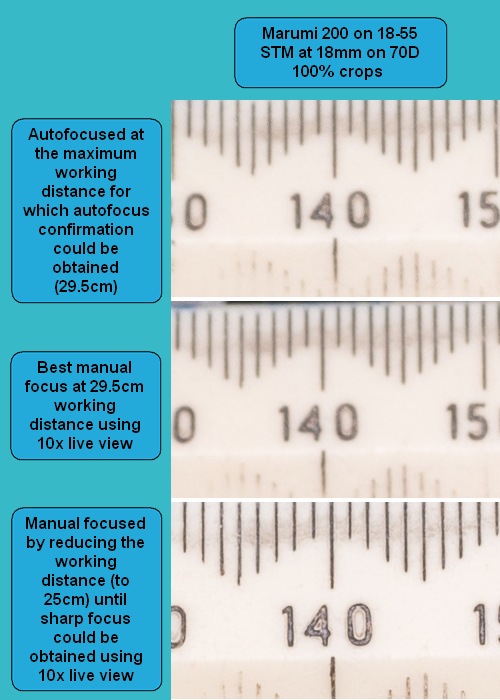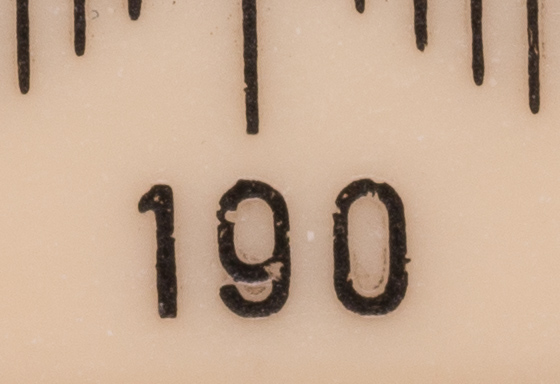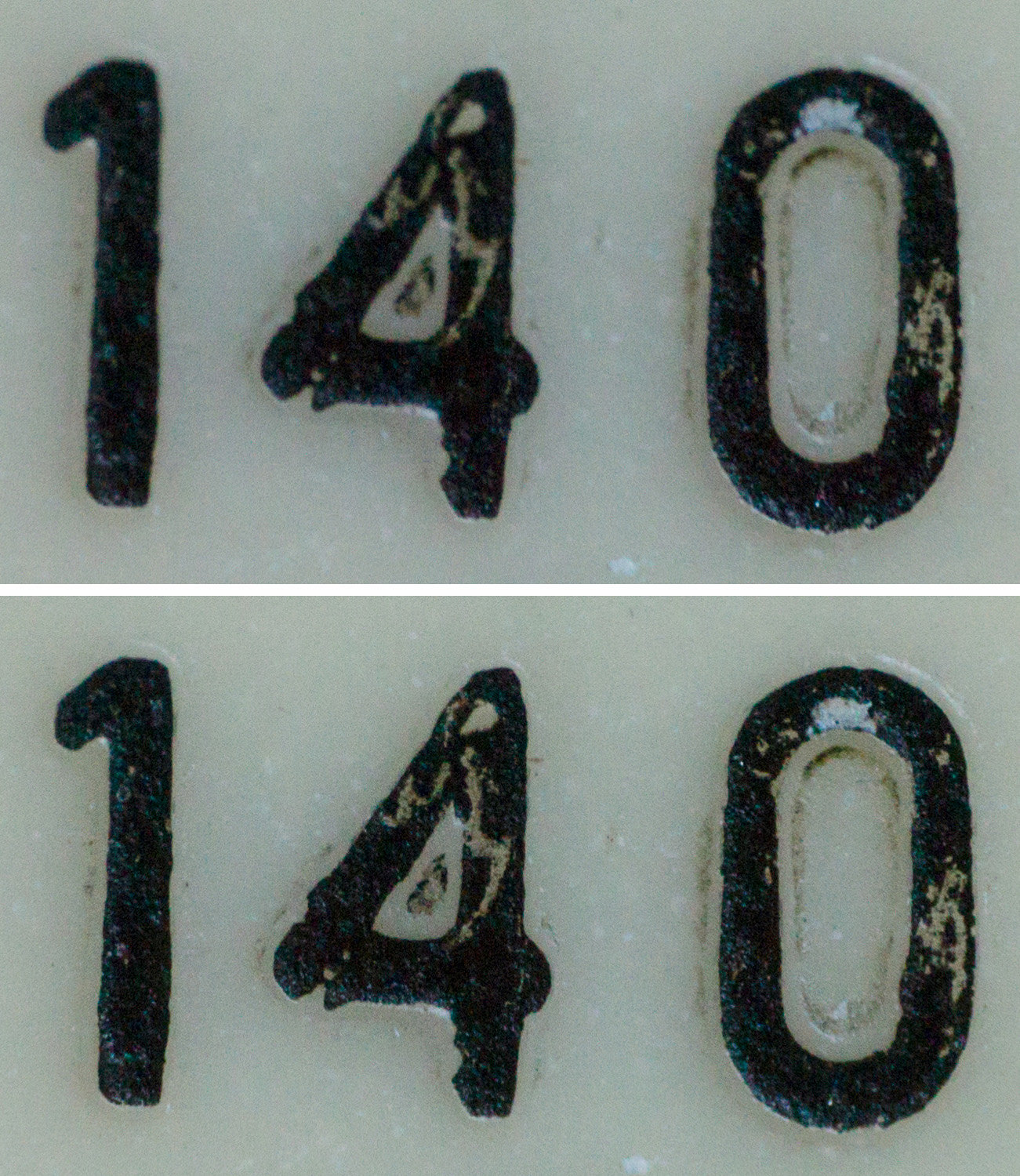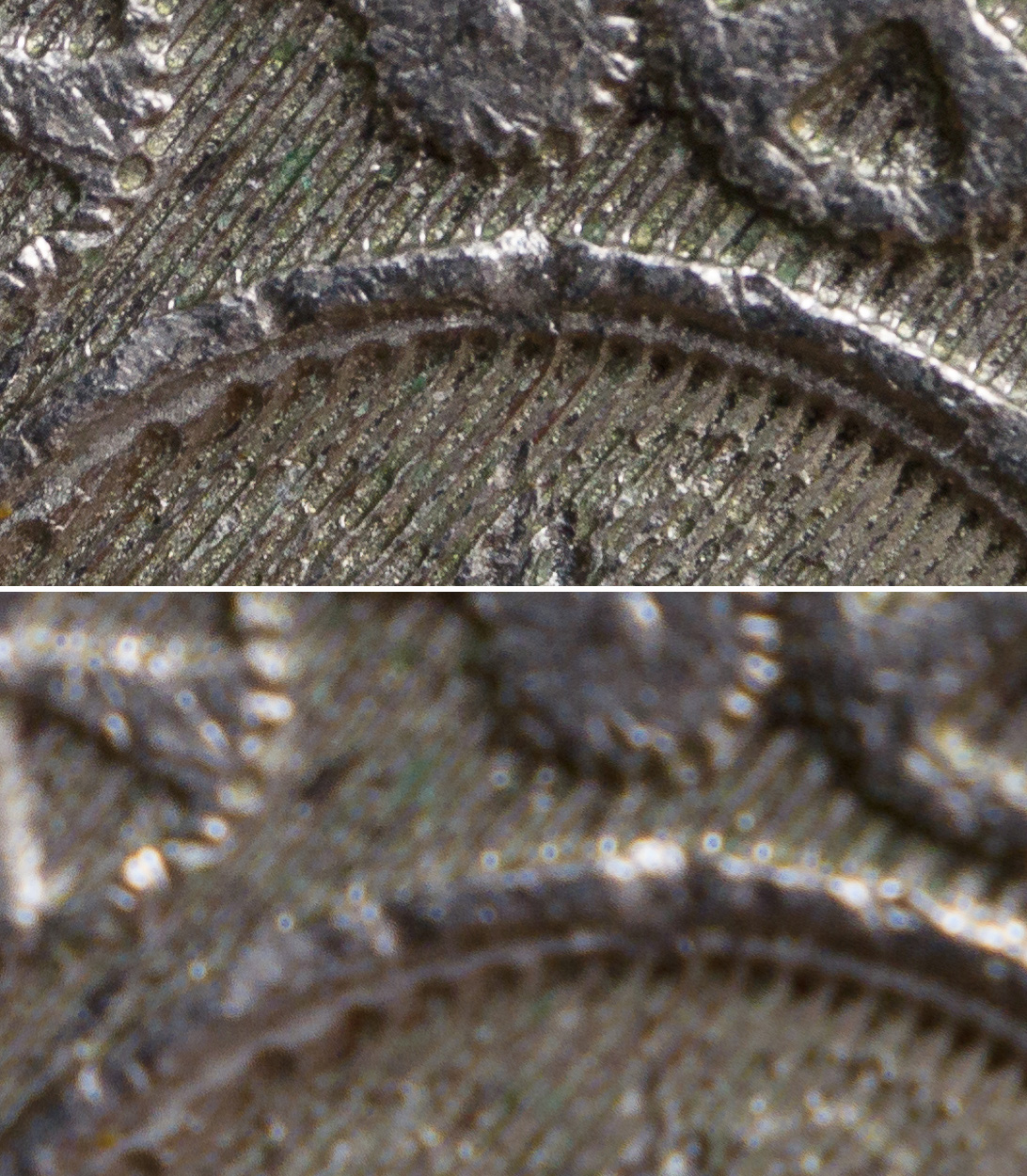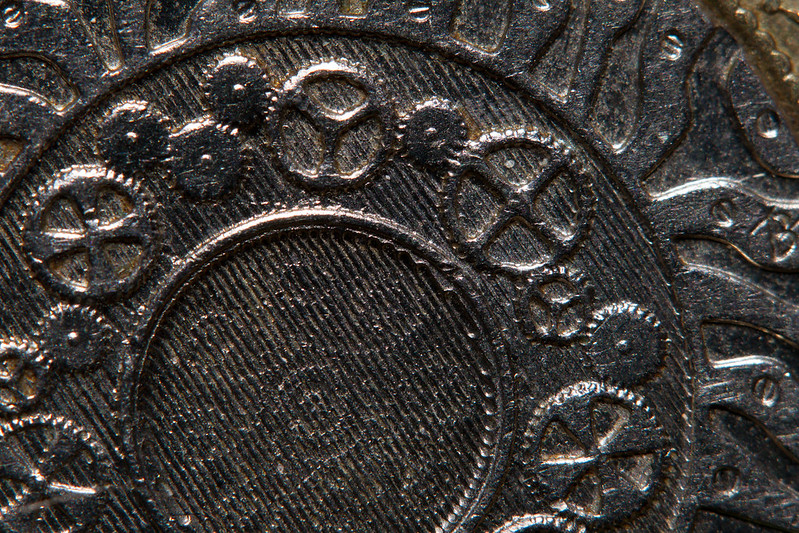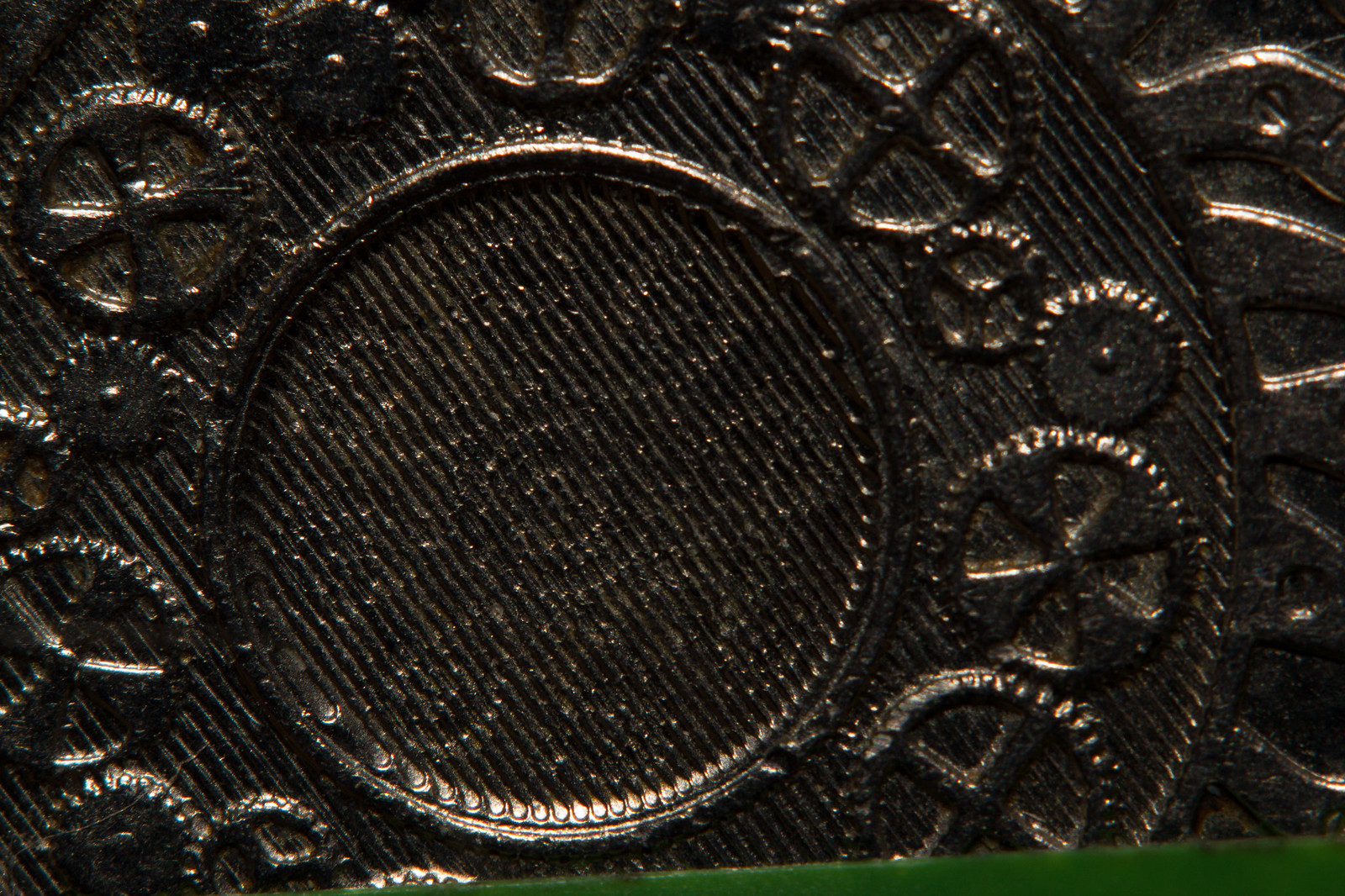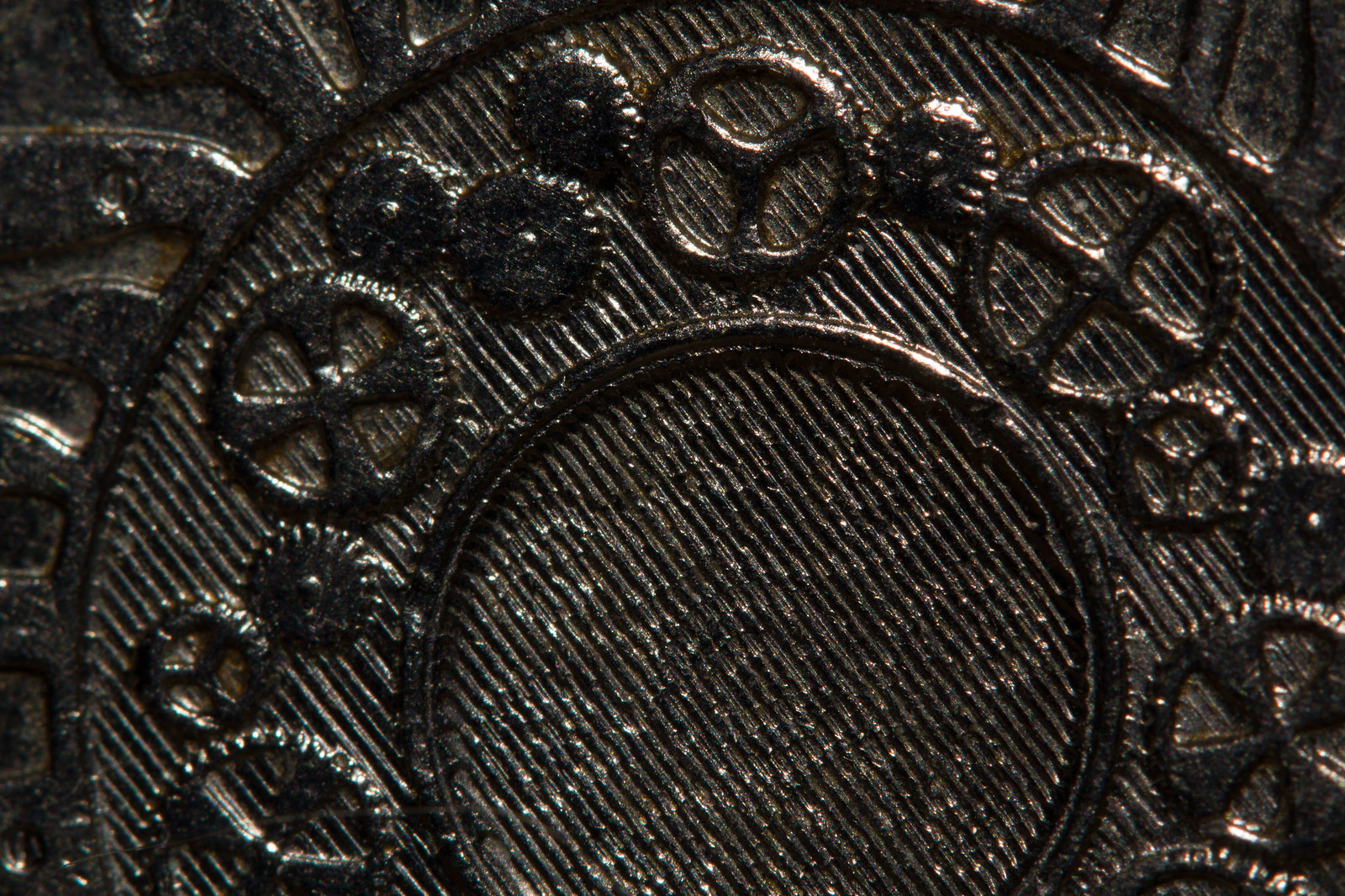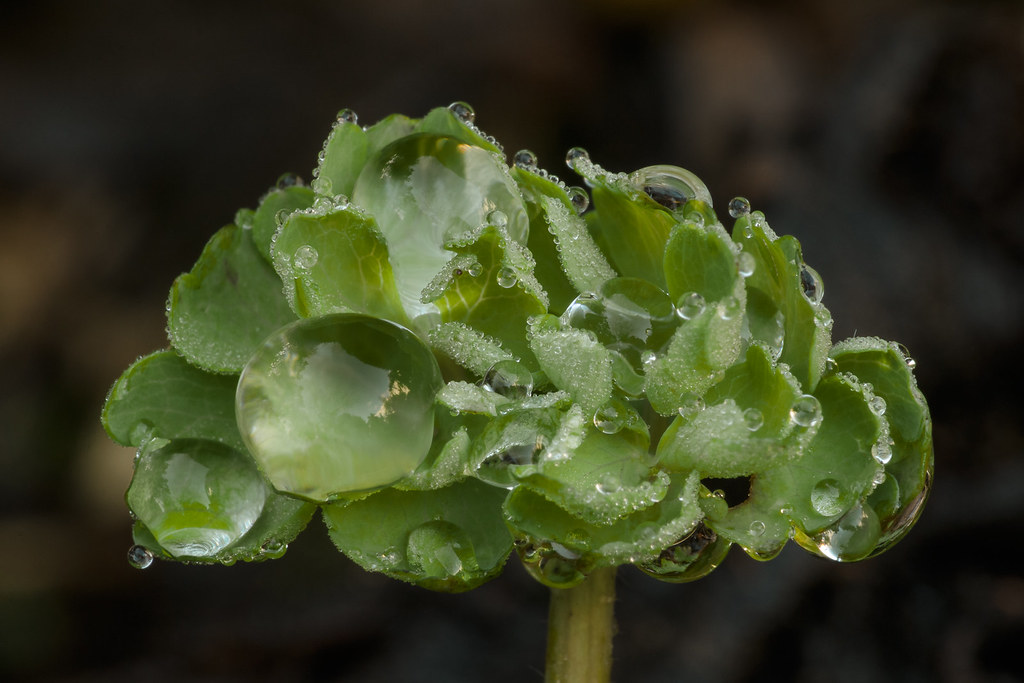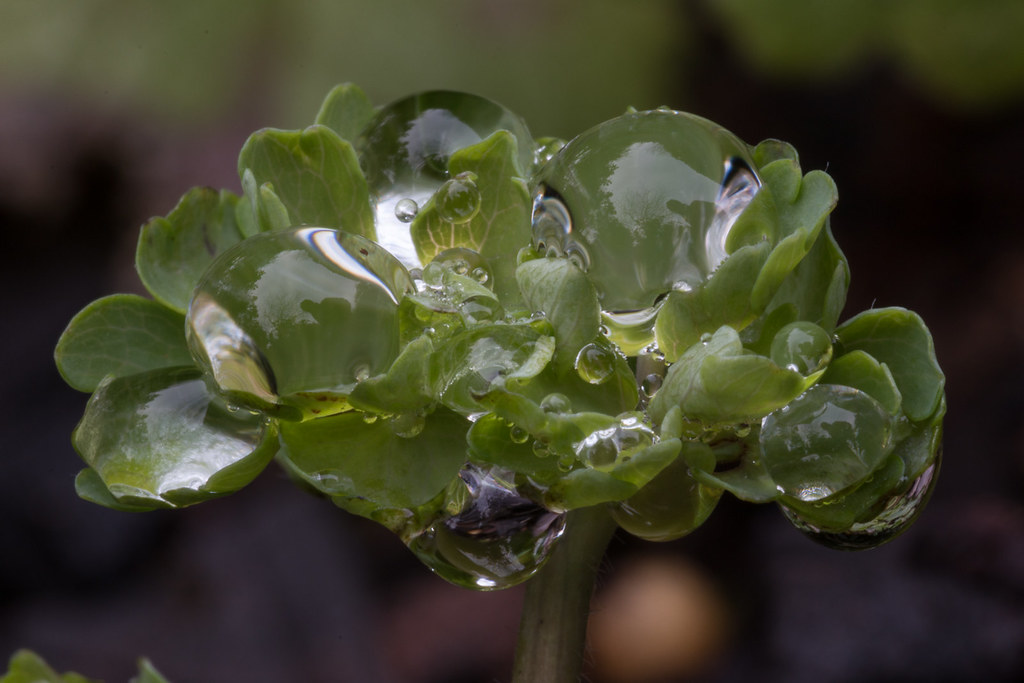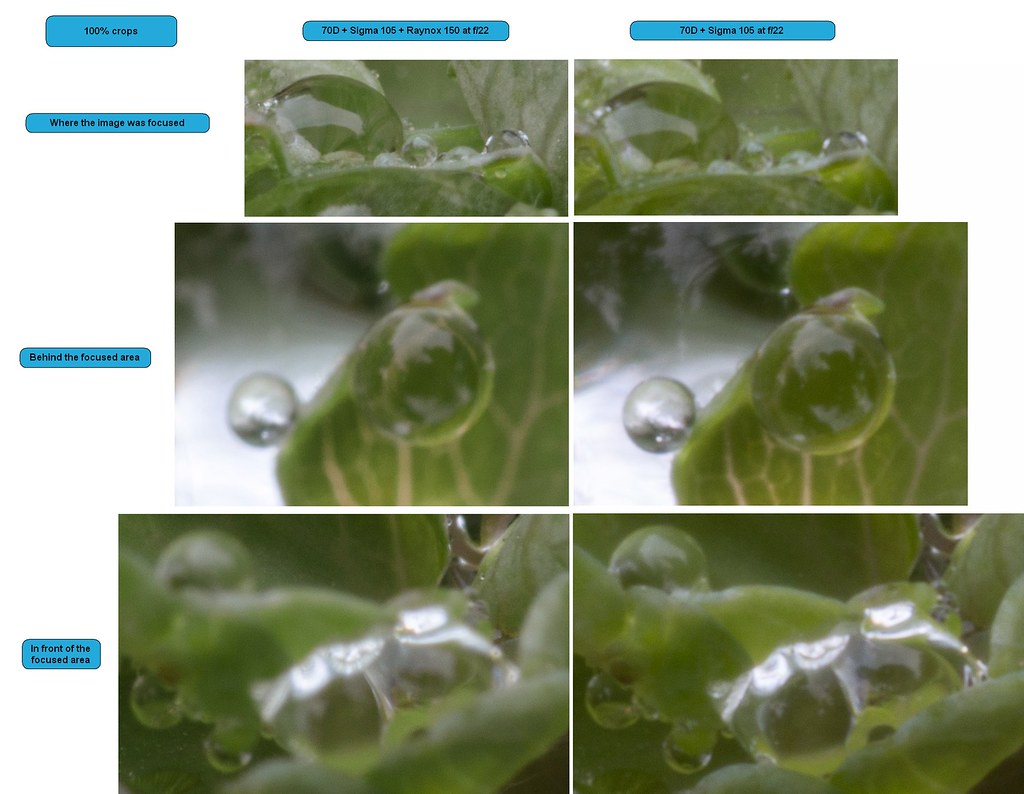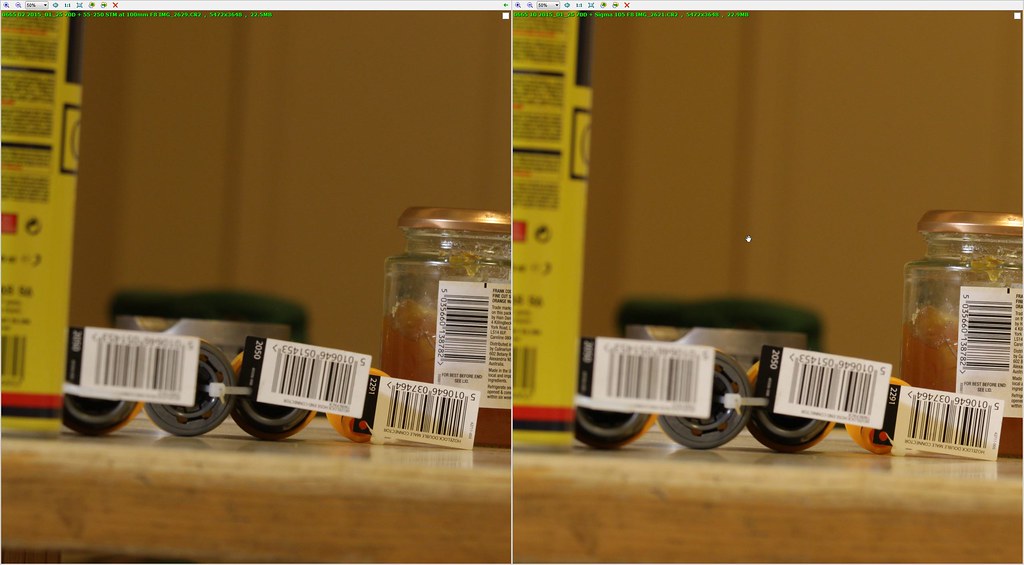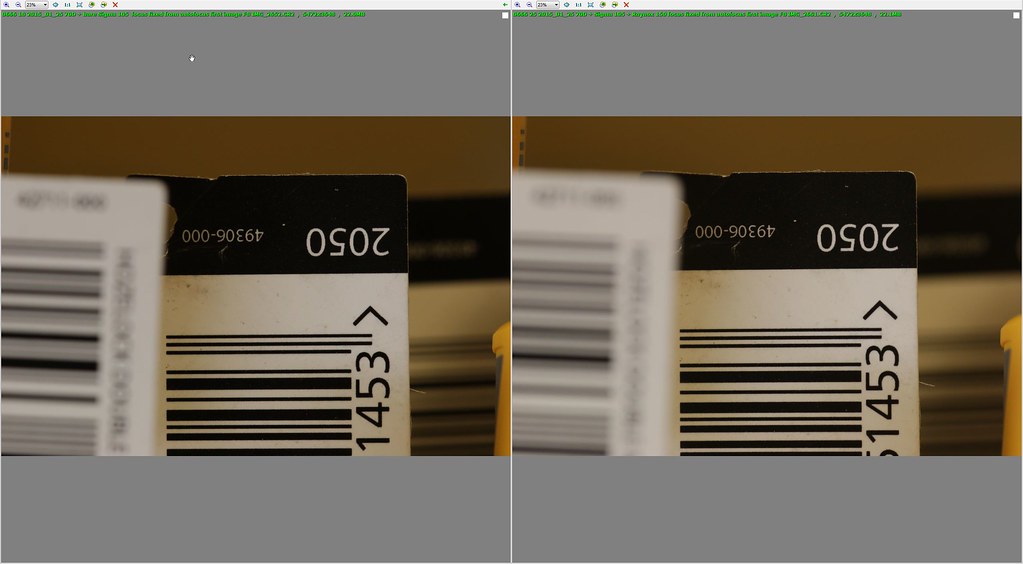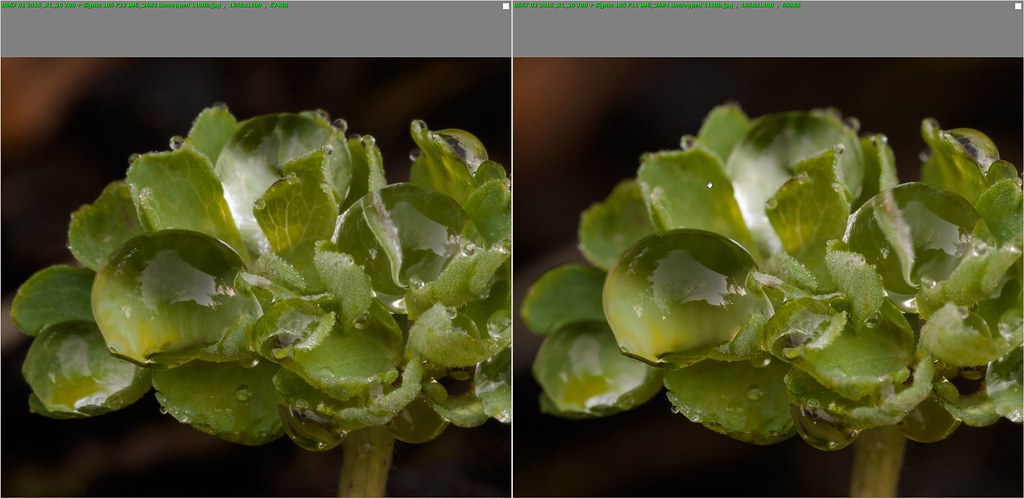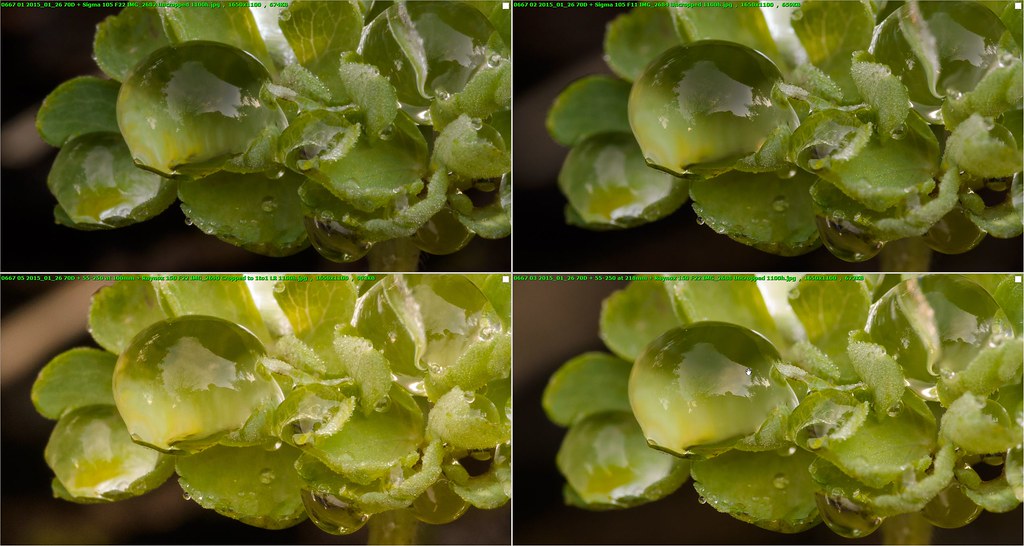GardenersHelper
In Memoriam
- Messages
- 6,344
- Name
- Nick
- Edit My Images
- Yes
Continued from previous post
It seems the Canon 70D and Sigma 105 Macro will let me capture the best looking (to my eye), most detailed images of my four rigs. So, what's the problem?
Reach. Flexibility, Ease, speed and creativity in use. And these latest tests suggest that these are non-trivial issues.
The Sigma 105 has, obviously, a fixed focal length of 105mm. You would think that this wouldn't matter with flowers etc. They are not going anywhere, so you have plenty of time, and you can “zoom with your feet”. Just move towards or away from the subject to alter the magnification/framing of the scene.
Except that sometimes, you can't. In a short session with a very small number of subjects I encountered two examples.
In one case there was a pond in the way; I simply couldn't get close enough with the Sigma 105 to get the framing I wanted. There is an obvious way around this - capture the image with the Sigma 105 and then crop. You can certainly do this, but you lose the benefits of the Sigma 105's better potential image quality.
This graphic shows the crops that need to be made to a Sigma 105 image to give it the same framing/magnification as using my zoom rigs at maximum magnification from the same place (on the tripod as near as I could get it to the edge of the pond).

0649 15 Equivalence crops by gardenersassistant, on Flickr
In the images for this exercise over at Flickr there are pairs of images, one of the pair being an image captured with one of the zoom rigs and the other of the pair being the Sigma 105 image cropped to give the same coverage.
The 70D and G3 images were captured at ISO 1600, and the FZ200 image at ISO 200, which is the ISO needed to get a similar shutter speed with the FZ200 as you need with the 70D or G3 when using an aperture that give similar dof. ISO 1600 was giving shutter speeds of around 1/60 sec with f/9 on the 70D. Given the breeze, ISO 1600 was not excessive. I find ISO 1600 gives acceptable results for botanical subjects as long as I don't crop much. However, the cropping needed to match the zoom rigs is non-trivial, and as you can see from the pairs of examples at Flickr, noise is a significant issue with the Sigma 105 crops.
Also, the more you crop, the more detail you lose, and such cropping to increase “reach” undercuts and in some cases (like this one in fact) may well completely negate or even reverse the advantages of the Sigma 105 in the amount of detail captured.
In the second example I would only have been able to get the framing I wanted with the Sigma 105 by putting the tripod on the flower bed, right where there was a patch of very delicate moss that takes years to develop; that was a non-runner. If I was limited to using the Sigma 105 this would have prevented me capturing various potentially quite nice images of a number of buds and flowers. As with the first example, I could have captured those shots with any of my other rigs with their zoom lenses. In both these examples I successfully used the 55-250 on the 70D. That won't always be possible, because even with the extra focal length I might not get close enough, but I do quite often use long focal lengths for flowers etc so the Sigma's shorter focal length could be a significant limitation at times.
The following graphic illustrates the range that I can cover without moving the camera with the 55-250 on the 70D (the differences in “working distance” are caused by the camera lens extending, not by the camera moving). The G3 +45-175 and the FZ200 (when set up the way I use it with an adaptor tube) provide similar, slightly smaller ranges. (3.9x for the G3 with the 45-175 and 3.4x for the FZ200 compared to 4.5x for the 70D with 55-250.)
On the left you see the focal lengths for the 55-250 which produced the images. On the right you see the working distances that would be needed with the Sigma 105 to capture the same images. With the Sigma 105, the camera would need to move just over a metre to move between the minimum and maximum magnifications/scene sizes the 55-250 can capture without moving.

0649 14 Reach ratio for 55-250 and working distances for 105 macro by gardenersassistant, on Flickr
Even if there is nothing stopping you placing the camera where it needs to be, it can still be very awkward. The flower I was photographing for the tests discussed in the previous post was somewhat inside the bush's foliage and the shots had to be aligned from somewhat above the flower. A tripod was essential because the low light levels were giving me exposures as slow as ½ second. I quickly discovered that in these circumstances, when trying to get a particular framing for the shot using the Sigma 105, you not only have to adjust the horizontal distance of the camera from the subject (which often involves moving the tripod despite using a focus rail), but you also have to adjust its height so as to maintain the “angle of attack”. This is slow, fiddly and surprisingly difficult to get right, very much so compared to using a zoom lens, with which you can change the framing in under a second without moving the camera or altering the angle of attack. And slowness can matter, because although the flowers aren't going anywhere, the light can change rather quickly, for example when a subject is illuminated by a stream of light coming through a gap in the foliage above, and the illumination can change quickly as the sun moves around, or changes in cloud cover, which can produce very rapid changes in illumination.
It gets worse, for me at least. I “compose by exploration”. That is, I don't see a shot by looking at the scene and then aligning the camera to capture what I see in my mind's eye. I explore the scene with the camera, ranging in and out as I adjust the angle of attack using the sideways focus rail and the adjustable arm. With the Sigma 105 I can use the sideways focus rail and the adjustable arm to alter the alignment, but I can't use the (back to front) focus rail or the adjustable arm to alter the distance to the subject enough to change the framing/magnification significantly. That needs the tripod to be moved, including any needed height adjustment. And that turns a smooth, continuous, rapid flow of creative compositional exploration into a complicated, disjointed, slow and frustrating procedure that quickly dries out the creative juices.
So where does all this lead?
Irrespective of whether I use the Sigma 105 or the 55-250, I think the 70D is probably the best of my cameras for botanical work. These tests have reinforced my view of how much better it is with manual focus than the G3 or FZ200, and my view that manual focus is my preferred mode for botanical work. In terms of image quality, it seems to me that irrespective of which lens I use, the 70D produces colours and textures that I find more natural looking and pleasing than the other cameras, and that the 70D raw files are easier and quicker to handle than those from the G3 and FZ200.
So if 70D is the camera to use, what about the lens? The 55-250 is much better in terms of capture workflow. So does the Sigma 150 have advantages that outweigh this?
And now?
I'm not convinced about some of these tentative conclusions (e.g. overall image clarity/”presence”), and I don't yet have a good feel for how relevant any image detail issues are for my type of outputs. I think I need to spend more time using both lenses, seeing if I can learn to handle the Sigma 105 more fluidly, from time to time doing some more comparisons between the Sigma 105 and the 55-250 (bearing in mind that too much of that sort of thing is a great de-motivator), and spending more time processing images captured with the two lenses to get a better feel for their characteristics and potential.
It's looking to me that, despite the dust bunny problems I have encountered, I'm going to have to take both the Sigma 105 and the 55-250 out with me and get used to changing lenses in the field. Based on earlier work I will be taking the G3 for small aperture and medium/high magnification invertebrate captures (i.e. most of my invertebrate captures).
It is still in open question as to what I might best use for natural light shots of
It seems the Canon 70D and Sigma 105 Macro will let me capture the best looking (to my eye), most detailed images of my four rigs. So, what's the problem?
Reach. Flexibility, Ease, speed and creativity in use. And these latest tests suggest that these are non-trivial issues.
The Sigma 105 has, obviously, a fixed focal length of 105mm. You would think that this wouldn't matter with flowers etc. They are not going anywhere, so you have plenty of time, and you can “zoom with your feet”. Just move towards or away from the subject to alter the magnification/framing of the scene.
Except that sometimes, you can't. In a short session with a very small number of subjects I encountered two examples.
In one case there was a pond in the way; I simply couldn't get close enough with the Sigma 105 to get the framing I wanted. There is an obvious way around this - capture the image with the Sigma 105 and then crop. You can certainly do this, but you lose the benefits of the Sigma 105's better potential image quality.
This graphic shows the crops that need to be made to a Sigma 105 image to give it the same framing/magnification as using my zoom rigs at maximum magnification from the same place (on the tripod as near as I could get it to the edge of the pond).

0649 15 Equivalence crops by gardenersassistant, on Flickr
In the images for this exercise over at Flickr there are pairs of images, one of the pair being an image captured with one of the zoom rigs and the other of the pair being the Sigma 105 image cropped to give the same coverage.
The 70D and G3 images were captured at ISO 1600, and the FZ200 image at ISO 200, which is the ISO needed to get a similar shutter speed with the FZ200 as you need with the 70D or G3 when using an aperture that give similar dof. ISO 1600 was giving shutter speeds of around 1/60 sec with f/9 on the 70D. Given the breeze, ISO 1600 was not excessive. I find ISO 1600 gives acceptable results for botanical subjects as long as I don't crop much. However, the cropping needed to match the zoom rigs is non-trivial, and as you can see from the pairs of examples at Flickr, noise is a significant issue with the Sigma 105 crops.
Also, the more you crop, the more detail you lose, and such cropping to increase “reach” undercuts and in some cases (like this one in fact) may well completely negate or even reverse the advantages of the Sigma 105 in the amount of detail captured.
In the second example I would only have been able to get the framing I wanted with the Sigma 105 by putting the tripod on the flower bed, right where there was a patch of very delicate moss that takes years to develop; that was a non-runner. If I was limited to using the Sigma 105 this would have prevented me capturing various potentially quite nice images of a number of buds and flowers. As with the first example, I could have captured those shots with any of my other rigs with their zoom lenses. In both these examples I successfully used the 55-250 on the 70D. That won't always be possible, because even with the extra focal length I might not get close enough, but I do quite often use long focal lengths for flowers etc so the Sigma's shorter focal length could be a significant limitation at times.
The following graphic illustrates the range that I can cover without moving the camera with the 55-250 on the 70D (the differences in “working distance” are caused by the camera lens extending, not by the camera moving). The G3 +45-175 and the FZ200 (when set up the way I use it with an adaptor tube) provide similar, slightly smaller ranges. (3.9x for the G3 with the 45-175 and 3.4x for the FZ200 compared to 4.5x for the 70D with 55-250.)
On the left you see the focal lengths for the 55-250 which produced the images. On the right you see the working distances that would be needed with the Sigma 105 to capture the same images. With the Sigma 105, the camera would need to move just over a metre to move between the minimum and maximum magnifications/scene sizes the 55-250 can capture without moving.

0649 14 Reach ratio for 55-250 and working distances for 105 macro by gardenersassistant, on Flickr
Even if there is nothing stopping you placing the camera where it needs to be, it can still be very awkward. The flower I was photographing for the tests discussed in the previous post was somewhat inside the bush's foliage and the shots had to be aligned from somewhat above the flower. A tripod was essential because the low light levels were giving me exposures as slow as ½ second. I quickly discovered that in these circumstances, when trying to get a particular framing for the shot using the Sigma 105, you not only have to adjust the horizontal distance of the camera from the subject (which often involves moving the tripod despite using a focus rail), but you also have to adjust its height so as to maintain the “angle of attack”. This is slow, fiddly and surprisingly difficult to get right, very much so compared to using a zoom lens, with which you can change the framing in under a second without moving the camera or altering the angle of attack. And slowness can matter, because although the flowers aren't going anywhere, the light can change rather quickly, for example when a subject is illuminated by a stream of light coming through a gap in the foliage above, and the illumination can change quickly as the sun moves around, or changes in cloud cover, which can produce very rapid changes in illumination.
It gets worse, for me at least. I “compose by exploration”. That is, I don't see a shot by looking at the scene and then aligning the camera to capture what I see in my mind's eye. I explore the scene with the camera, ranging in and out as I adjust the angle of attack using the sideways focus rail and the adjustable arm. With the Sigma 105 I can use the sideways focus rail and the adjustable arm to alter the alignment, but I can't use the (back to front) focus rail or the adjustable arm to alter the distance to the subject enough to change the framing/magnification significantly. That needs the tripod to be moved, including any needed height adjustment. And that turns a smooth, continuous, rapid flow of creative compositional exploration into a complicated, disjointed, slow and frustrating procedure that quickly dries out the creative juices.
So where does all this lead?
Irrespective of whether I use the Sigma 105 or the 55-250, I think the 70D is probably the best of my cameras for botanical work. These tests have reinforced my view of how much better it is with manual focus than the G3 or FZ200, and my view that manual focus is my preferred mode for botanical work. In terms of image quality, it seems to me that irrespective of which lens I use, the 70D produces colours and textures that I find more natural looking and pleasing than the other cameras, and that the 70D raw files are easier and quicker to handle than those from the G3 and FZ200.
So if 70D is the camera to use, what about the lens? The 55-250 is much better in terms of capture workflow. So does the Sigma 150 have advantages that outweigh this?
- The Sigma 105 goes to f/2.8 rather than f/4-5.6 depending on focal length, and so has much greater potential for narrower dof shots. But I very rarely use f/2.8, or in fact anything less than f/5.6, and am usually disappointed with the results when I do, despite how good it might look to me on the LCD at capture time. On the other hand, rather than the f/22 limit of the Sigma 105, the 55-250 goes to f/22-32 depending on focal length, and I have used those smaller apertures successfully for botanical shots.
- The Sigma 105 captures more detail in the in-focus areas than the 55-250. However, I have had to pixel peep to be sure about that. I rarely crop my botanical shots much – I tend to compose to the edge of the frame. This means that, given my output sizes (1100 pixels high on screen and A4 and only occasionally larger in print) most of the extra detail is not going to be visible to the viewer of the finished result. Much of the extra in-focus detail therefore seems to be, for my purposes, irrelevant.
- The Sigma 105 captures more detail/provides better microcontrast or some such in the less in focus and out of focus areas, and I suspect gives better overall clarity and “presence” to at least some images. I think these are probably its main attractions to me at this stage.
And now?
I'm not convinced about some of these tentative conclusions (e.g. overall image clarity/”presence”), and I don't yet have a good feel for how relevant any image detail issues are for my type of outputs. I think I need to spend more time using both lenses, seeing if I can learn to handle the Sigma 105 more fluidly, from time to time doing some more comparisons between the Sigma 105 and the 55-250 (bearing in mind that too much of that sort of thing is a great de-motivator), and spending more time processing images captured with the two lenses to get a better feel for their characteristics and potential.
It's looking to me that, despite the dust bunny problems I have encountered, I'm going to have to take both the Sigma 105 and the 55-250 out with me and get used to changing lenses in the field. Based on earlier work I will be taking the G3 for small aperture and medium/high magnification invertebrate captures (i.e. most of my invertebrate captures).
It is still in open question as to what I might best use for natural light shots of
- larger invertebrates such as butterflies and dragonflies,
- snails and slugs in motion
- medium to large size flies and similar sized subjects
Last edited:


